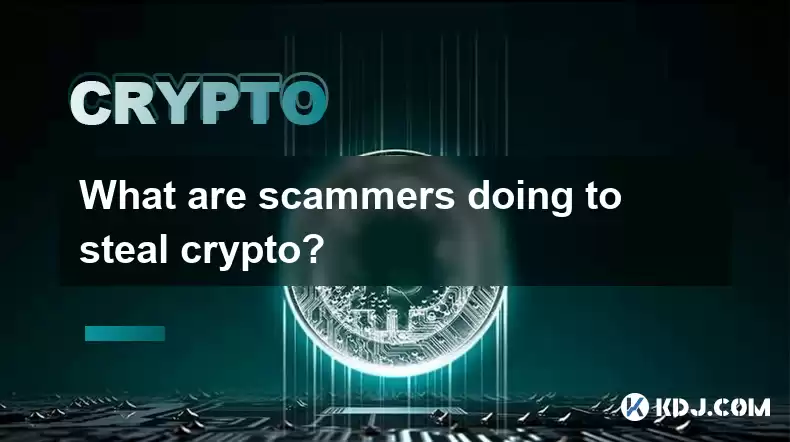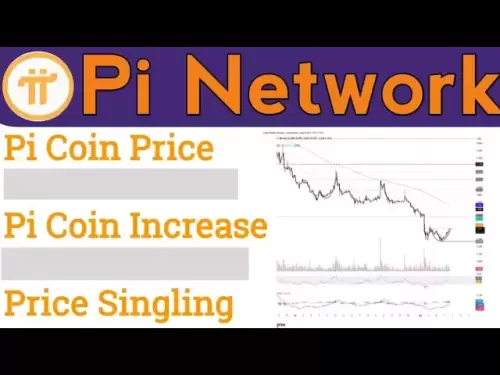-
 Bitcoin
Bitcoin $118300
1.01% -
 Ethereum
Ethereum $4215
0.69% -
 XRP
XRP $3.198
-3.83% -
 Tether USDt
Tether USDt $1.000
-0.01% -
 BNB
BNB $803.4
-0.53% -
 Solana
Solana $180.3
-0.67% -
 USDC
USDC $0.9998
-0.01% -
 Dogecoin
Dogecoin $0.2334
-1.49% -
 TRON
TRON $0.3394
0.86% -
 Cardano
Cardano $0.7980
-1.45% -
 Chainlink
Chainlink $22.19
6.65% -
 Hyperliquid
Hyperliquid $43.41
0.13% -
 Stellar
Stellar $0.4407
-3.13% -
 Sui
Sui $3.843
-2.24% -
 Bitcoin Cash
Bitcoin Cash $564.7
-3.74% -
 Hedera
Hedera $0.2588
-3.41% -
 Ethena USDe
Ethena USDe $1.001
0.00% -
 Avalanche
Avalanche $23.64
-3.37% -
 Litecoin
Litecoin $120.0
-4.01% -
 Toncoin
Toncoin $3.342
-1.11% -
 UNUS SED LEO
UNUS SED LEO $9.038
0.60% -
 Shiba Inu
Shiba Inu $0.00001347
-0.81% -
 Uniswap
Uniswap $10.69
-4.58% -
 Polkadot
Polkadot $4.034
-1.30% -
 Dai
Dai $1.000
0.01% -
 Bitget Token
Bitget Token $4.472
-1.52% -
 Cronos
Cronos $0.1571
-3.04% -
 Pepe
Pepe $0.00001207
-2.21% -
 Monero
Monero $273.8
-3.19% -
 Ethena
Ethena $0.7520
2.75%
What are scammers doing to steal crypto?
Stay vigilant against crypto scams by recognizing phishing emails, fake exchanges, pump-and-dump schemes, social engineering tactics, and malware such as cryptojacking software.
Feb 06, 2025 at 01:31 pm

Key Points:
- Scammers are constantly developing new methods to steal cryptocurrency, making it essential to stay informed about their tactics.
- Phishing attacks remain a common method for scammers to obtain login credentials, private keys, and seed phrases.
- Fake exchanges and fraudulent investment schemes are designed to trick victims into depositing their funds into fraudulent accounts.
- Pump-and-dump scams manipulate coin prices to create the illusion of substantial profits, encouraging investors to buy in before the market crashes.
- Social engineering techniques leverage human psychology to manipulate victims into providing sensitive information or making unwise investments.
- Malware, such as cryptojacking software, can secretly use computing resources to mine cryptocurrency without the user's knowledge.
Step 1: Phishing Attacks
Phishing attacks involve malicious emails or messages that appear to originate from legitimate sources, such as exchanges or wallet providers. These messages typically contain links to fraudulent websites that resemble the official platforms, where victims are prompted to enter their login credentials, private keys, or seed phrases. Scammers can then steal cryptocurrency or gain access to the victim's accounts.
Step 2: Fake Exchanges and Fraudulent Investment Schemes
Scammers create fake exchanges that mimic the appearance and features of legitimate platforms. Victims lured into these exchanges may deposit their funds to purchase or trade cryptocurrency, but their assets are stolen instead. Similarly, fraudulent investment schemes promise high returns on crypto investments but operate as Ponzi schemes, paying out early investors with funds from subsequent victims.
Step 3: Pump-and-Dump Scams
Pump-and-dump scams target inexperienced investors by artificially inflating the price of a particular cryptocurrency. Scammers promote the coin through social media or online forums, creating the illusion of a profitable investment opportunity. Once enough investors have purchased the coin, scammers sell their holdings, causing the price to crash, leaving investors with significant losses.
Step 4: Social Engineering
Social engineering techniques rely on human psychology to manipulate victims into providing sensitive information or making imprudent investments. Scammers may impersonate customer support personnel, exchange representatives, or even cryptocurrency developers to gain the victim's trust. They may use psychological tactics, such as urgency or exclusivity, to pressure the victim into making rash decisions.
Step 5: Malware
Malware, malicious software, can compromise a victim's computer or device to steal cryptocurrency. Cryptojacking software, for instance, can secretly use the victim's computing resources to mine cryptocurrency for the scammer, without the victim's knowledge or consent. Other malware may intercept login credentials, wallet addresses, or seed phrases, enabling scammers to access and steal cryptocurrency directly.
FAQs:
- What can I do to protect myself from crypto scams?
Stay alert to any suspicious emails or messages, never share login credentials or seed phrases with anyone, and thoroughly research any investment opportunities or exchanges. Use reputable platforms, activate two-factor authentication, and keep software up to date to minimize the risk of malware infection.
- How can I identify fake exchanges?
Genuine exchanges have a strong online presence, clear terms of service, and positive user reviews. Check for spelling and grammatical errors in the exchange's website address, and be wary of exchanges that offer unrealistic returns or require unusually high minimum deposits.
- What are the signs of a pump-and-dump scam?
Rapid price increases not supported by fundamental factors, excessive social media hype, and a lack of liquidity should raise suspicion of a pump-and-dump scheme. Avoid investing in coins promoted by unknown or untrustworthy individuals or groups.
- How can I avoid falling for social engineering scams?
Exercise caution when interacting with unsolicited messages or individuals online. Never provide sensitive information, such as login credentials or seed phrases, without verifying the sender's identity. Check the email addresses or phone numbers of individuals claiming to represent reputable organizations and be wary of requests for urgent actions or exclusive investment opportunities.
- What are the best practices for preventing malware attacks?
Keep operating systems and software up to date, use reliable antivirus software, and avoid downloading files or clicking links from unfamiliar sources. Disconnect devices from the internet when not in use and consider using a hardware wallet for increased security of cryptocurrency holdings.
Disclaimer:info@kdj.com
The information provided is not trading advice. kdj.com does not assume any responsibility for any investments made based on the information provided in this article. Cryptocurrencies are highly volatile and it is highly recommended that you invest with caution after thorough research!
If you believe that the content used on this website infringes your copyright, please contact us immediately (info@kdj.com) and we will delete it promptly.
- Cardano, Returns, and Trade Deals: A New Yorker's Take
- 2025-08-10 18:50:16
- Dogwifhat's Comeback: Solana Meme Coin Mania and Beyond!
- 2025-08-10 18:30:15
- Solana vs. Ethereum: The Meme Coin Throwdown and the Rise of Layer Brett
- 2025-08-10 19:10:16
- Solana, Exodus, and Tokenization: A New Era for Equity?
- 2025-08-10 18:50:16
- Bitcoin, Chainlink, and Crypto: What's the Hype?
- 2025-08-10 19:10:16
- Trump, Crypto, and Treasury Companies: What's the Deal?
- 2025-08-10 19:15:16
Related knowledge

What is Ethereum’s Slashing mechanism and how to punish malicious behavior?
Feb 20,2025 at 03:08am
Key PointsOverview of slashingDifferent types of slashing in EthereumIncentives and consequences of slashingIdentifying and reporting slashed validato...

What is the verifier node of Ethereum and how to become a verifier?
Feb 19,2025 at 06:00pm
The Verifier Node of Ethereum: A Comprehensive GuideKey Points:What is a Verifier Node?How to Become a Verifier NodeResponsibilities and Rewards of a ...

What is Ethereum’s staking, and how to participate and earn money?
Feb 19,2025 at 04:37pm
Key Points:Understanding Ethereum's Staking MechanismSteps to Participate in StakingBenefits and Rewards of StakingSecurity and Risk ConsiderationsTec...

What is Ethereum’s DAO (Decentralized Autonomous Organization) and how does it work?
Feb 20,2025 at 03:12am
Key PointsDefinition and Structure of a DAOGovernance and Decision-Making in DAOsBenefits and Use Cases of DAOsChallenges and Limitations of DAOsWhat ...

What is Ethereum's multi-signature wallet and how to improve security?
Feb 20,2025 at 02:18pm
Key Points:Understanding the Concept of a Multi-Signature WalletBenefits and Drawbacks of Multisig WalletsRequirements for Setting Up a Multisig Walle...

What is Ethereum's oracle and how to provide data for smart contracts?
Feb 21,2025 at 01:30am
Key Points:Understanding the concept of oracles in EthereumExploring different types of oraclesDetailed guide on how to provide data for smart contrac...

What is Ethereum’s Slashing mechanism and how to punish malicious behavior?
Feb 20,2025 at 03:08am
Key PointsOverview of slashingDifferent types of slashing in EthereumIncentives and consequences of slashingIdentifying and reporting slashed validato...

What is the verifier node of Ethereum and how to become a verifier?
Feb 19,2025 at 06:00pm
The Verifier Node of Ethereum: A Comprehensive GuideKey Points:What is a Verifier Node?How to Become a Verifier NodeResponsibilities and Rewards of a ...

What is Ethereum’s staking, and how to participate and earn money?
Feb 19,2025 at 04:37pm
Key Points:Understanding Ethereum's Staking MechanismSteps to Participate in StakingBenefits and Rewards of StakingSecurity and Risk ConsiderationsTec...

What is Ethereum’s DAO (Decentralized Autonomous Organization) and how does it work?
Feb 20,2025 at 03:12am
Key PointsDefinition and Structure of a DAOGovernance and Decision-Making in DAOsBenefits and Use Cases of DAOsChallenges and Limitations of DAOsWhat ...

What is Ethereum's multi-signature wallet and how to improve security?
Feb 20,2025 at 02:18pm
Key Points:Understanding the Concept of a Multi-Signature WalletBenefits and Drawbacks of Multisig WalletsRequirements for Setting Up a Multisig Walle...

What is Ethereum's oracle and how to provide data for smart contracts?
Feb 21,2025 at 01:30am
Key Points:Understanding the concept of oracles in EthereumExploring different types of oraclesDetailed guide on how to provide data for smart contrac...
See all articles

























































































